
This web page will introduce you to the BioBrick cloning method which is commonly used in synthetic biology. The purpose of this method for cloning DNA is to provide a universal method for labs to interchange parts that will ligate together efficiently. Developing construction standards is a hallmark of synthetic biology. The BioBrick standard was developed by Tom Knight and his collaborators at MIT.

Figure 1. Two standard parts in BioBrick plasmids.

Figure 2. Two ligated parts from Figure 1 now in BioBrick a single plasmid.
To understand how to clone parts with BioBrick ends, you need to understand more about the four main restriction sites in BioBrick ends. Let's start with the first restriction enzyme to be discovered, Eco RI (Figure 3). EcoRI's recognition sequence is 5' GAATTC 3' on the top strand, which is also the sequence on the bottom strand. The restriction enzyme cuts as indicated by the red line. After the two covalent bonds are broken, the two halves drift apart and expose two sticky ends that can base pair with each other.
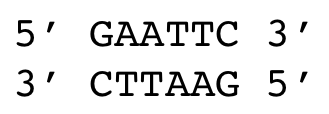 |
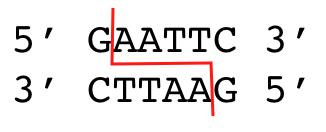 |
 |
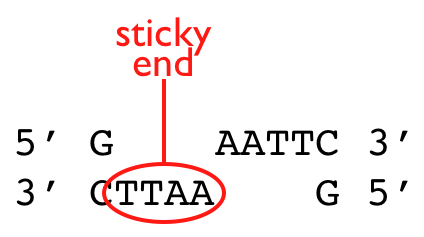 |
Figure 3. Explanation of Eco RI restriction site and how it is cleaved by the enzyme to produce its sticky ends.
All four restriction enzymes used in BioBrick ends are listed in Figure 4 below. You can see where each enzyme cuts and the resulting sticky ends.
Enzyme |
Recognition Sequence |
Overhang |
Eco RI |
 |
 |
Xba I |
 |
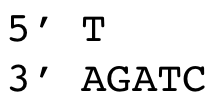 |
Spe I |
 |
 |
Pst I |
 |
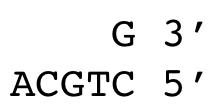 |
Figure 4. Summary of the four BioBrick restriction sites.
Pay close attention to the sticky ends each enzyme produces.
First, notice that all restriction sites are palindromes, meaning that the top strand 5' to 3' is identical to the bottom strand 5' to 3'. Also, notice that Xba and Spe produce identical sticky ends which means their restriction sites can anneal to each other. However, when an Xba I sticky end anneals with a Spe I sticky end, a mixed site is produce which cannot be cut by any restriction enzyme, including Xba and Spe (Figure 5).
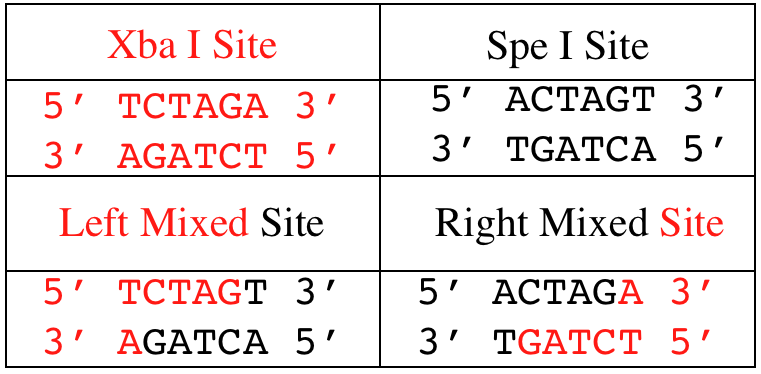
Figure 5. Explanation of mixed sites created by ligating a Spe I site with an Xba I site.
Mixed sites are not palindromes, therefore, they can never be cut by any restriction enzyme. Therefore, two parts assembled with a mixed site, sometimes called a scar, will never come apart.
Challenge Questions:
How can you ligate part A and B together as shown in Figure 2 above?
How many different ways can you produce A followed by B?